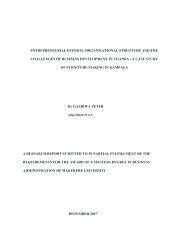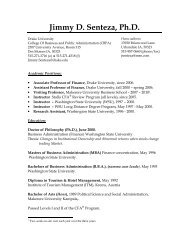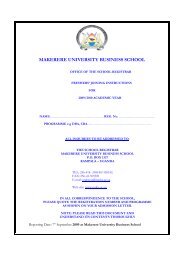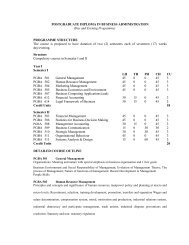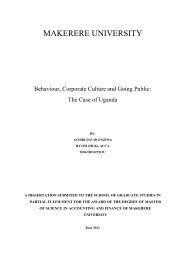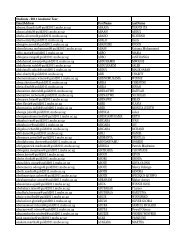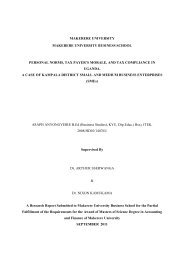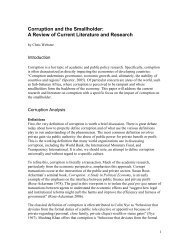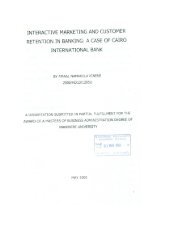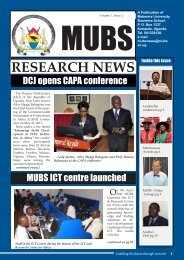13th Annual International Management Conference Proceeding
13th Annual International Management Conference Proceeding
13th Annual International Management Conference Proceeding
Create successful ePaper yourself
Turn your PDF publications into a flip-book with our unique Google optimized e-Paper software.
association and Sub country extension staff. Traditional methods of farming have persisted whose output is<br />
very low.<br />
The findings further indicated that 89% of the respondents use only family labour. This implies that those<br />
without enough skills have to keep on using traditional methods of farming which yield low returns. The<br />
reason for failure to hire labour was attributed to low income and small scale farming where employing<br />
agricultural experts does not pay.<br />
Traditional division of labour<br />
The traditional division of labour prohibits agricultural outputs because a lot of work is left to women. The<br />
table below summarizes the findings on sharing the agricultural activities.<br />
Table 3.4: A Table showing the Division of labour in Agriculture<br />
Activity Men Women Children Hired Labour<br />
Bush clearing 102 45 08 45<br />
Bush burning 133 37 08 -<br />
First ploughing 40 113 - 37<br />
Second ploughing 38 112 08 12<br />
Sowing 88 102 02 08<br />
Weeding 12 175 05 10<br />
Harvesting 60 125 02 13<br />
Drying crops 98 94 08 -<br />
Building granaries 182 02 10 6<br />
Selling the produce 163 32 04 01<br />
Source: Primary Data<br />
The table shows that women do most of the hardest agricultural activities such as ploughing, sowing and<br />
weeding. Children and hired labour are not highly used in all the activities. Most farmers use hired labour<br />
during bush clearing and first ploughing. The traditional division of labour indicates that men participate<br />
more in bush burning building granaries and selling the produce.<br />
Inputs<br />
Implements<br />
Lack of both capital and variable inputs was noted to be among the major determinants of agricultural<br />
output. Most farmers are still using the traditional agricultural tools such as hoes and pangas. Although some<br />
farmers have big chunks of land where tractorisation would apply, there incomes are too low to allow the use<br />
of tractors and later alone machine operators. The major agricultural implement used is a hoe. 97.5 % of the<br />
respondents indicated that they use a hoe. This is because hoes are cheap and easy to use.<br />
Crops grown<br />
Respondents were asked to indicate the nature of the crops grown. The 152 respondents indicated that they<br />
grown their traditional crops because they have high nutritional content but most importantly that they do<br />
not have side effects on their soil.<br />
Table 3.5: A Table showing the reasons for using the traditional crops<br />
Reasons for growing traditional crops No %<br />
Have no side effects on soil 72 47.2<br />
High nutritional content 50 32.8<br />
The are cheap 12 7.8<br />
Do not require too much labour 18 11.8<br />
Total 152 100<br />
Source: Primary Data<br />
79



